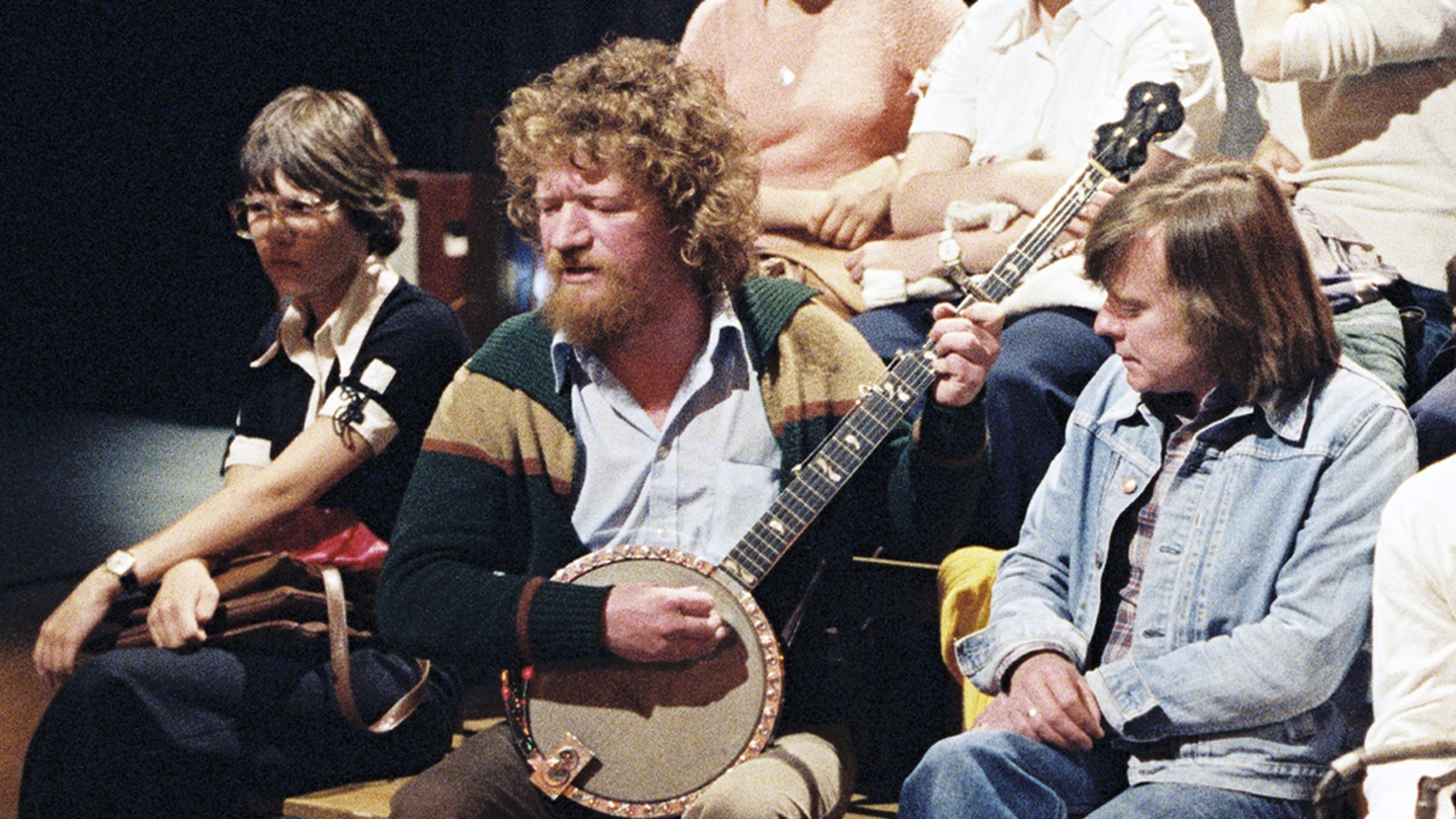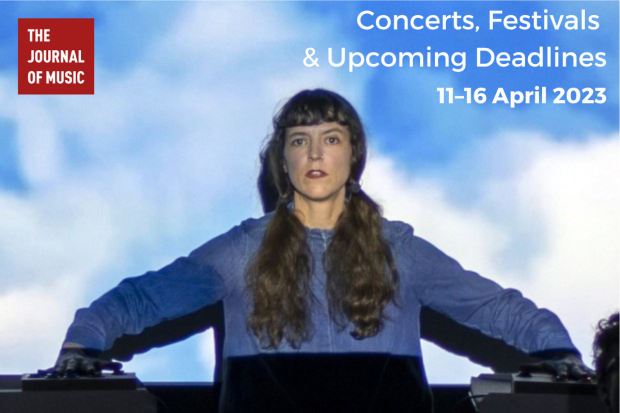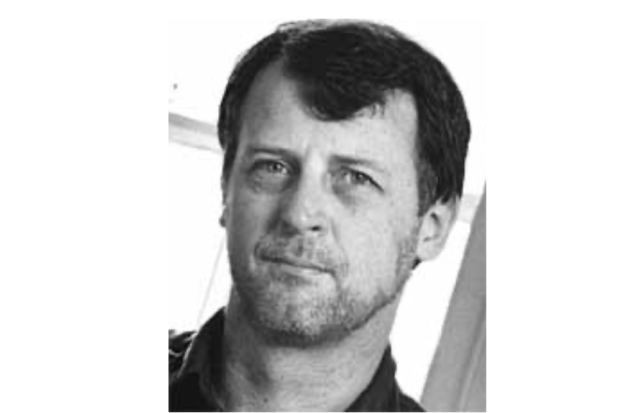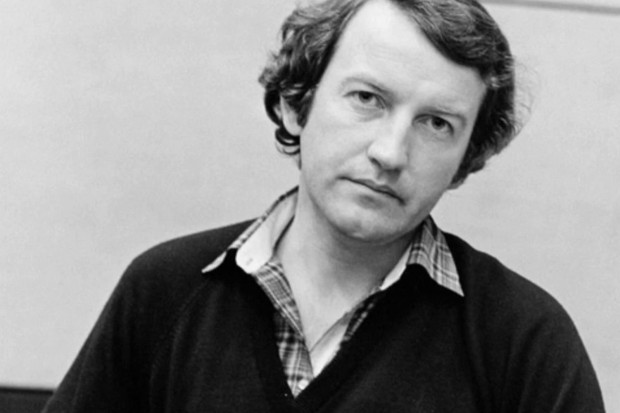
Time to Kill off the Revival
The idea for this article came after reading a piece by Siobhán Long in the Irish Times (22 September 2001) entitled ‘Language of rhythm and metre’, although I was also encouraged to write it after hearing the performance of Ronan Guilfoyle’s band Lingua Franca during the ESB Jazz week, also in September.
The Irish Times article comprised interviews with some of the musicians featured in the TG4 series Sé Mo Laoch (‘He’s my Hero’) as well as with the producer, Philip King. The musicians concerned – Seán Potts, Johnny O’Leary, Seán Maguire, Vincent and Jimmy Campbell, Peter O’Loughlin and Joe Burke – are legends within traditional music. These are people who played ‘traditional’ music when it was the at-home entertainment, a part of the fabric of community life. I would think that they are actually the ‘folk’ who were looked up to during the ‘folk revival’. Their words are Gospel and the onus has always been on the musicians who come after them to make space amongst our experience of traditional music for whatever philosophies these masters may utter. Not to do this could imply a certain immaturity in your understanding of the music, for as traditional musicians we understand that the height of our musical achievement will come when we have absorbed the tradition fully, when we are, so to speak, at one with our forefathers in music.
At least that’s the general idea…
In this interview, these legends spoke admirably of community, tradition, concern over regional styles, concern over young musicians, how the music must change to survive, the connection between Irish music and the Irish language, how it’s the music of the people, their music, our music, and how fine it is that Irish people aren’t ashamed to play this music anymore.
It is important to note that these ideas and views, the choice of phrase even, are not exclusive to these heroes or to their era. You will hear them reiterated in this form regularly today. Not only have we managed to keep alive this music and transmute it to new generations, but we have also maintained an uncanny continuity over time in the language we use to describe it.
At the same time as I came across the Irish Times article I was tentatively dipping into Richard Kearney’s Postnationalist Ireland. I came across a section where he discussed the role of myth in a nation’s culture. In the context of the literary revival of the early 1900s and how the succeeding generation reacted to it, he discussed the powerful myth that had been created by W.B. Yeats and his colleagues but which subsequently hung over the next generation. So powerful was the myth, Kearney explained, that it had not died out with its creators. It had lived on and was proving terribly difficult for the next generation to shrug off, much to their chagrin. The great literary revival myth simply didn’t correspond with their reality. It continued to arise in all sorts of psychological and cultural manifestations and subsequently paralysed them. They reacted strongly against it, and so in turn created their own myth, one inspired by a tough realism, which – naturally – was in turn rejected by the generation that followed them.
I found much food for thought in this idea of myth and began to think of traditional music in these terms. In traditional music, we have had our own revival – the much celebrated ‘folk revival’. No one would argue with the fact that it is over, that we are now in fact in ‘post-revival’, but could we have also had a ‘revival myth’? What were its features? What was its purpose? Might it still hang over us?
During the folk revival, there was a huge emphasis on traditional music’s distinctiveness and individuality. This was, of course, necessary, for if you are attempting a national revival of an endangered genre of music, you need to make the music appear absolutely irreplaceable and utterly distinctive. You need to instil people with a healthy paranoia, to fire them up, make them obsessive about it, whip them in to a revival frenzy. The folk revival was imbued with a powerful myth, strong enough – as we have seen – to blast this music into the twenty-first century. It has been a complete success.
There is a vital distinction, however, between the response of the generation that inherited the literary revival myth and the response of the generation that succeeded to the folk revival myth. When Sean O’Faolain, Patrick Kavanagh and company recognised the elongation of an unwelcome revival myth they set about dismantling it in words, through poetry, prose, articles and essays. But in Irish traditional music, the generation that followed the revival – naturally enough – responded in music, or rather, in instrumental music. In comparison there have been very few truly dominant songwriters or singers within traditional music in the post-revival era – though the work of John Spillane, Cathy Jordan and Ronán and Colm Ó Snodaigh is not to be ignored. But yet it has not been enough to overtake the work of Andy Irvine, Christy Moore, Dick Gaughan, Paul Brady and Luke Kelly. Thus, no verbal language or expression of traditional music using words came forcefully into play. The response to the folk revival myth by the post-revival generation has not been silent, but certainly predominantly non-verbal. The result is that while we have acres of music that says the revival is over and that is busy dismantling the folk-revival myth in musical terms, our language has not changed and this new music is still described within the terms of the old. Fiddler Paddy Glackin pointed to this in 1995 (Irish Music, September) when he was quoted as saying that there is ‘a confusion… brought about partly because of the overwhelming diversity of the revival and due to the lack of writers and the absence of and established vocabulary of criticism.’ I would add that it is not the absence of a ‘vocabulary of criticism’ per se, for the folk revival certainly had terms in which to discuss the music that it was comfortable with – and we still have that – but rather that there is no verbal language, no use of words, that corresponds with the post-revival era.
Does this matter? I think so. It is demoralising for an entire generation to be weighed down by concepts and language that bear little resemblance with their reality. More than that, the out-of-date myth is unlikely to inspire them in their music making. They find themselves musically trying out the new, but are not encouraged to think of it in new terms. They are constantly dragged back to folk-revival thinking. It nags at them and they sense a conflict in what they are doing.
The manner in which traditional music is discussed – in newspapers, on television and on radio – is predominatly loyal to the folk revival and does not serve the interests of today’s musicians intellectually. Token comments on how Irish traditional music is ‘opening up’ and ‘bringing in new influences’ are understatements that allow commentary to be lazy and uninterrogative, giving the vague impression that things have moved on, but never straying far enough from folk revival thinking so as to be still easily slotted in to the public imagination and their vague concept of what Irish traditional music is.
The only way out of this mire is to publicise and promote some new thinking. The disharmony caused by the prolonged life of the folk revival myth came to a head in the late 1980s and mid-1990s. Four major events came within a space of a few years: the BBC TV series Bringing it all Back Home and The River of Sound, Riverdance, and Crosbhealach and Cheoil: The Crossroads Conference. In 1999, three years after the conference, the papers from the Crossroads Conference were finally published in book form and one was able to assess whether this few years of incessant discussion had actually got us anywhere.
While there is many fine contributions that capture the dissatisfaction of the present situation, and remind us to value aspects of the past, two articles instantly leap out as telling us something about a possible future, that seem to ask different questions, that expand the framework of references with which to discuss Irish traditional music.
Georgina Boyes essay ‘Unnatural Selection: Choice and Privileging in English Cultural Tradition’ begins, ‘The Folk Revival in England has succeeded. English folksongs, music and dances of every type are now widely practised and accessible to anyone who wishes to see, hear or perform them.’ Then, in a fine analysis, she illustrates many of the incongruities and paradoxes inherent in folk revival thinking in relation to today, finally concluding that ‘until we acknowledge that it’s activities and behaviours that we’re working with then this Conference will have to keep coming back to the same hoary old questions about what is folksong and who are the Folk which I’ve heard countless times this past thirty years. I’ve enjoyed this meeting at the Crossroads, but I think it’s high time our discussions progressed onto topics that are more interesting – and meaningful.’
Martin W. Dowling’s essay, ‘Communities, Place, the Traditions of Irish Dance Music’, is a fine example of someone trying to creatively stretch the boundaries of thinking on traditional music. After beginning by discussing the practice common amongst traditional musicians of drawing inspiration from place and locality for their music, particularly from rural areas where the music had been particularly strong, he says, ‘The question is, what happens to this fragile tradition of making pilgrimages when the musicians who live and play there pass away and are not replaced? The day is soon coming when we will all be pilgrims. What will this mean for communities of practitioners, for regional styles, for the future of the music?’ That issue was never the folk-revival’s concern, but it is ours now.
Dowling concludes positively, arguing that it is the distinctive structure of this music that will carry the music’s integrity through these challenges, but along his way, he heavily quotes jazz musicians and even finishes with a rush of Noam Chomsky on the modern destruction of values, finally connecting this to traditional music performance. I think this expansion of references – trying to discuss Irish music like any other music – is very healthy. Ordinarily, Irish traditional music is discussed with little reference to the wider world and contemporary thinking on art, society, culture. It is thought of within its own comfortable box, the folk-revival myth.
I suggested earlier that, while I think, generally speaking, the mental environment in which traditional music finds itself today suggests it is still caught up in some airy folk-revival world, this hasn’t stopped musicians from transcending the meaninglessness and producing music that makes a laughing stock of the stale ideas. One recent performance in particular made me realise how far some Irish musicians have conceptually moved and how laughable the verbal language that contemporarily might be used to describe what they are doing is.
During the ESB Jazz Week in September, Ronan Guilfolye brought together his band Lingua Franca to perform some of his new compositions based on traditional Irish tunes. The evening was entitled ‘Lingua Franca Irish Project’. It is not Guilfolye’s first journey into traditional music, for he is also a member of the jazz-meets-traditional outfit Khanda, and for this concert the jazz bassist had involved two members from that band, Peter Browne on button accordion and Martin Nolan on uilleann pipes and low whistle, as well as the line-up of drums, guitar, saxophone and bass, and another special guest, Tanya Kalmanovitch on violin/viola.
I am of course speculating, but I suspect the impetus for the ‘Lingua Franca Irish Project’ was a result of Guilfoyle feeling he hadn’t fully explored the possible relationship between jazz and traditional music in Khanda. Either that or the sheer amount of raw material for a composer in the corpus of traditional music was too much to resist. I guess a little bit of both.
In this music, Guilfolye broke the First Law of the Folk Revival, that is, ‘Thou shalt be subservient to the tune’. Yet instead of arranging, altering or ‘jazzing-up’ the melody, he pared away its layers until he was left with the intervals, nuances and phrases of the tune. This, to my mind, was the key to this music’s success. Ever wonder how traditional musicians remember so many hundreds of tunes? It is not that they can in a moment summon up the melody of all these tunes. It is the single phrases and intervals, which, when hit upon in the memory, suggest a path through other phrases and intervals to ultimately form the entire tune. By reducing the tunes to those intervals and phrases Guilfolye had not only come across a currency suitable for his jazz composition but also succeeded in producing a music that did not compromise traditional musicians and what they do. They were encouraged to retreat to what is at the core of traditional music, a place, though perhaps ordinarily foreign, they can certainly become comfortable with. They didn’t have to undertake jazz improvisations on entire traditional tunes, they were requested to improvise on just certain phrases of the tunes. Interesting to note that, even within traditional music, that is becoming characteristic of the post-revival era.
But how are we to think of this music? Adhering to the folk-revival myth, we might suggest that this is another fine example of ‘traditional musicians reaching out to other genres but never losing sight of their roots’. But that hardly does justice to a seismic conceptual leap like being able to sit in on a contemporary jazz ensemble and improvise freely as a traditional musician! It is a different world and Guilfoyle’s compositions are as significant, in my opinion, to contemporary traditional music as I’m sure they are to contemporary Irish jazz.
In the Sunday Tribune the week after the festival, Cormac Larkin, in his jazz column, tried to sum up the music of the week. He commented that there was no question about the quality of the concerts, but again and again from audiences he had heard the same question: ‘But is it jazz?’
I couldn’t help but be reminded of traditional music in the 1990s when we often heard that question: ‘But is it traditional music?’ If it is played by traditional musicians yes it is, but that fact is obscured by our old descriptive language which is consistently clashing with our new music. More and more you will find that our traditional music today will make no sense to folk revival thinking or language. This music has little to do with what is ‘traditional’ or with the ‘folk’ anymore. That is the new reality and it is now in our interests to try and make sense of it.
Published on 1 November 2001
Toner Quinn is Editor of the Journal of Music. His new book, What Ireland Can Teach the World About Music, is available here. Toner will be giving a lecture exploring some of the ideas in the book on Saturday 11 May 2024 at 3pm at Farmleigh House in Dublin. For booking, visit https://bit.ly/3x2yCL8.

















